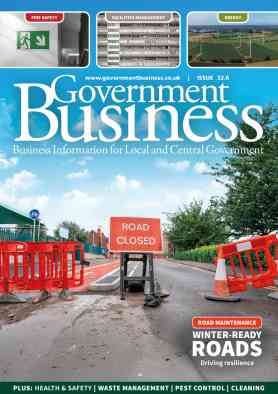Bringing the buzz back
 The Christmas shopping has been completed for another year and the January sales are in full swing. Britain’s high streets may be bustling with people right now, but how can local authorities ensure their town centres remain busy for the remainder of the year?
The Christmas shopping has been completed for another year and the January sales are in full swing. Britain’s high streets may be bustling with people right now, but how can local authorities ensure their town centres remain busy for the remainder of the year?
Local authorities are facing a daunting task. The government has announced that austerity measures will be in place until at least 2018, and high streets are struggling to attract visitors, who now frequently favour online shopping or out of town shopping centres.
To help revive the UK’s deteriorating high streets, various funding streams have been made available. In late 2012 the government announced that as part of the Town Team Partners Programme more than 300 towns not selected as Portas Pilots are to receive a share of a £5.5m funding and access to a network of advisers managed by the Association of Town Centre Management.
There is also the GLA’s Outer London Fund, provided by the Mayor of London, which has helped many towns including Enfield and Harrow to improve facilities and draw visitors back. So, if town centre managers have access to funding and are making plans to regenerate their high streets, how can they ensure they are getting maximum results from their spend.
If engagement of the businesses in the high street and town centre is not handled correctly, business owners can easily start to feel ignored, pressurised and even threatened by plans.
THE PHYSICAL IMPACT
Physical work may be necessary to regenerate a high street, and this is likely to have a huge impact on retailer’s footfall. Changes to parking restrictions and lighting may also cause problems, leading to trader opposition and increased hostility. This resistance will ultimately result in a slowdown of the project and an increase in cost.
In contrast, by ensuring engagement is handled correctly, councils can secure local business support and work alongside them to create greater and more sustainable change. By working with local businesses and understanding their concerns and needs, a town centre manager can start to incorporate these into regeneration plans and provide retailers with the necessary tools and training to make the changes themselves.
Successful engagement starts by spending time on the ground, in the high street and meeting with business owners face to face. Town centre managers can build trust and break down barriers by listening to the business owner’s views. If business owners are consulted and know that their input has been incorporated into plans they are less likely to oppose them afterwards. They will also feel less threatened if they have a point of contact at the council that they are familiar with and can easily reach should they have any questions.
A VOICE FOR THE HIGH STREET
Working with Traders Associations is a useful way of making sure that affected businesses are fully aware of any plans and proposals. If there isn’t a Traders Association already in place it is advisable to work with businesses to set one up. Traders Associations can provide a more focused voice for high street businesses which makes liaisons easier. They improve community spirit and can even help tackle crime. Traders Association leaders can then be invited to council meetings to give their feedback on how proposals are likely to affect businesses and offer advice on how to work around this. For example, if new pavements are needed as part of the regeneration plan, local authorities may be under pressure to have work carried out quickly to meet funding deadlines. From a retailers perspective, whilst they too want the improvements to take place, if work is carried out at Christmas time they could lose 50 per cent of their business during a key trading period. This leads to frustration, anger and opposition which could be avoided with proper engagement in the early stages.
Traders Associations can be consulted to find a happy medium, retailers can be given suitable warning, and proper signage and directions can be provided ensuring people can reach the stores.
PARKING
Councils may be keen to reduce congestion in a town centre. This can often be achieved by making changes to parking restrictions, which is also a good way to raise much needed revenue. Changes to parking will frequently be met by resistance from retailers who need it to be as easy as possible for their customers to reach their stores, and who need their cars themselves for customer deliveries, stock pickups and banking. By talking to the business owners and Traders Associations, local authorities can ensure there are enough loading bays available or that the most crucial bays aren’t affected, that people are given enough free minutes parking to allow them to buy tickets, and that business owners who need cars for work are given suitable warning and offered help with permit payment.
The manner in which councils engage with retailers will ultimately determine a project’s success. If the local businesses support projects and actively participate in training and regeneration plans, a far deeper effect can be achieved.
Whilst physical regeneration has a clear visual impact on a town centre, in deprived areas regeneration works best when it incorporates training and coaching of the local businesses too. By working in this way, councils can make a more sustainable change by not only improving the place but improving the people too.
FURTHER INFORMATION
www.vision-on.co.uk


